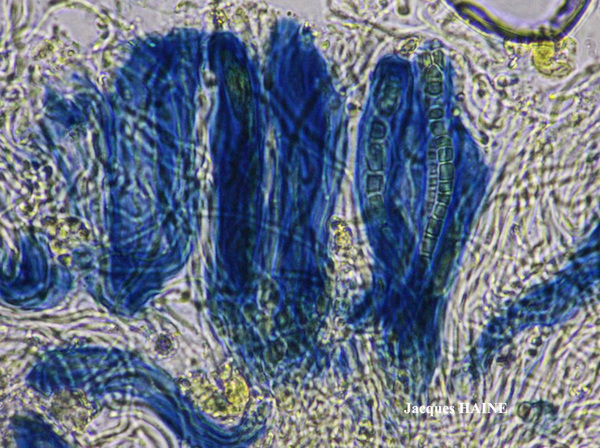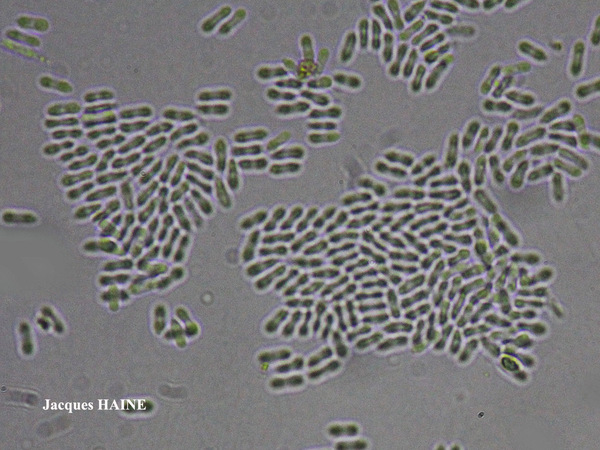Aquacidia antricola (Hulting) Aptroot
in Aptroot & al., Gorteria, 40: 13 , 2018.. Basionym: Bacidia antricola Hulting - Lich. Exkurs. Vestra Becking: 17, 1872.
Synonyms:
Distribution:
Description: Thallus crustose, thinly episubstratic, rimose or finely granular, glaucous- or grey-green, bright green when wet, esorediate, developing on a white prothallus which often forms a white margin. Apothecia very rare, 0.4-0.6 mm across, sessile, with a cream-coloured, pale pink or pale brown disc, and a persistent, white-pubescent, cottony proper margin. Proper exciple colourless, of thin-walled hyphae 1.5-3(-4) µm wide; hymenium colourless, 45-60 µm high; paraphyses 1.5-2 µm thick at mid-level, simple or forked in upper part, gradually widening to 3 µm at apices; hypothecium colourless. Asci 4-8-spored, cylindrical-clavate, with a K/I+ blue apical dome and an apical cushion surrounded by a cylindrical ring-structure, Micarea-type. Ascospores (2-)3-5(-9)-septate, hyaline, narrowly fusiform to almost acicular, very variable in size, from 14-28 x 3-4 µm to 30-50 x 3-4.5 µm, with a tapering appendage at the ends. Pycnidia 0.2-0.4 µm across, more or less sessile, white-pubescent, initially globose, then with a gaping ostiole and cup-shaped. Conidia hyaline, oblong, biguttulate, often with a median constriction. 4-5.7 x (1-)1.5 µm. Photobiont chlorococcoid, the cells 4-10 µm wide. Spot tests: thallus K-, C-, KC-, P-, UV+ pink. Chemistry: unidentified xanthones.Note: a suboceanic species growing on shaded siliceous rocks in humid woodlands, rarely also on roots at the base of old trees, usually on rain-sheltered surfaces beneath overhangs, mostly sterile. The species is known from many localities in northwestern Europe, but its presence in Italy, especially in the Tyrrhenian ecoregion, cannot be excluded.
Growth form: Crustose
Substrata: rocks
Photobiont: green algae other than Trentepohlia
Reproductive strategy: mainly sexual, or asexual by conidia and thalloconidia
Most common in areas with a humid-warm climate (e.g. most of Tyrrenian Italy)
In underhangs rarely wetted by rain
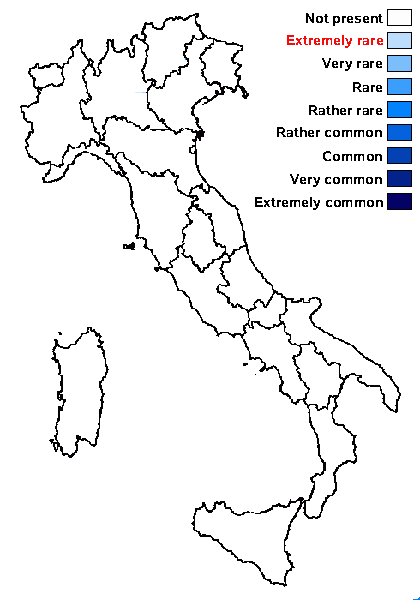
Predictive model
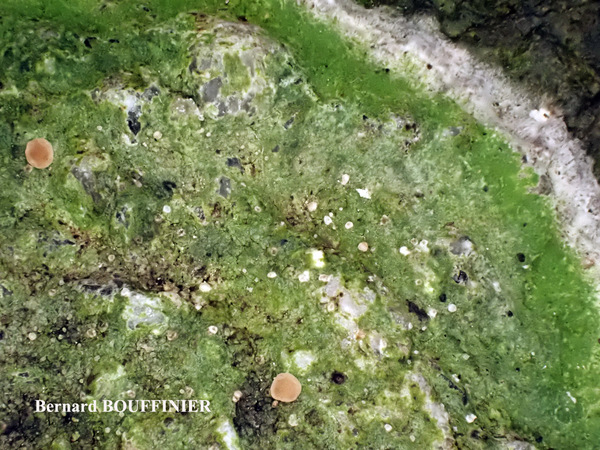
Bernard Bouffinier - Source: http://www.lichensmaritimes.org/index.php?task=fiche&lichen=1208&lang=en
France, Loqueffret
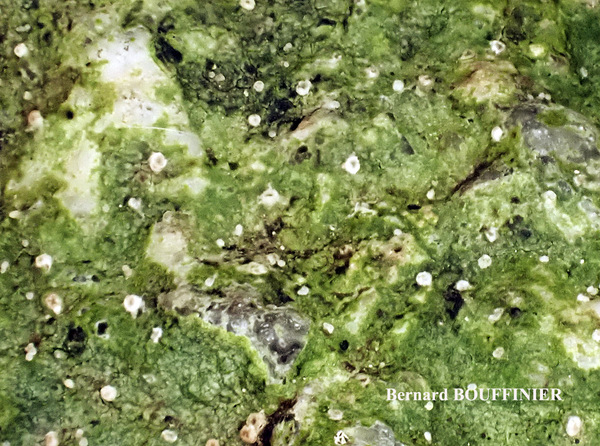
Bernard Bouffinier - Source: http://www.lichensmaritimes.org/index.php?task=fiche&lichen=1208&lang=en
France, Loqueffret
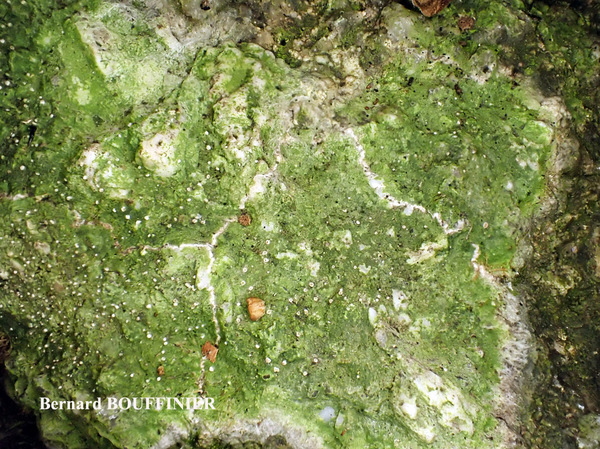
Bernard Bouffinier - Source: http://www.lichensmaritimes.org/index.php?task=fiche&lichen=1208&lang=en
France, Loqueffret
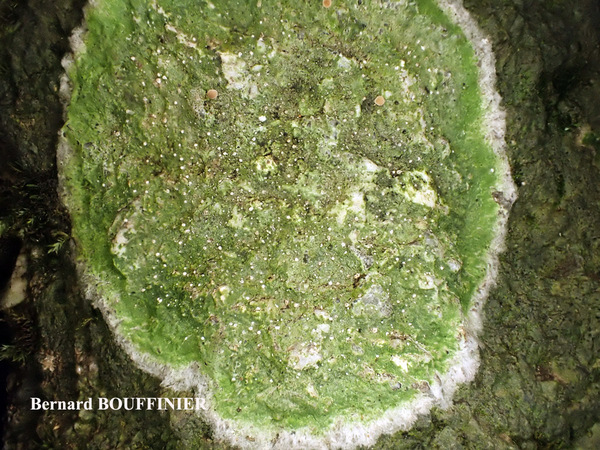
Bernard Bouffinier - Source: http://www.lichensmaritimes.org/index.php?task=fiche&lichen=1208&lang=en
France, Loqueffret
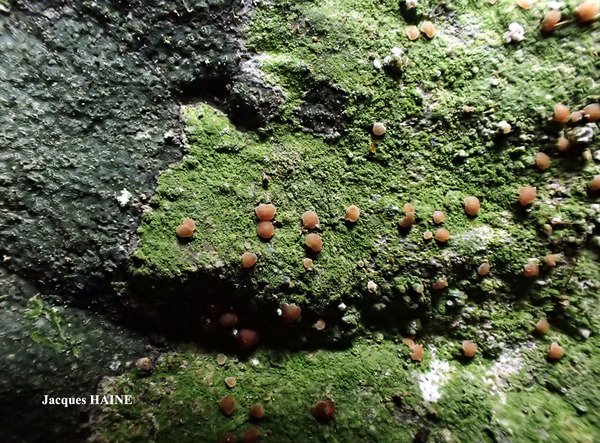
Jacques Haine - Source: http://www.lichensmaritimes.org/index.php?task=fiche&lichen=1208&lang=en
Belgium, Hermeton

Jacques Haine - Source: http://www.lichensmaritimes.org/index.php?task=fiche&lichen=1208&lang=en
Belgium, Hermeton
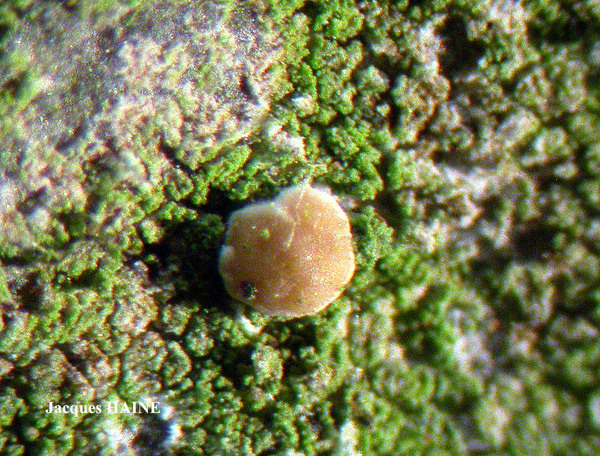
Jacques Haine - Source: http://www.lichensmaritimes.org/index.php?task=fiche&lichen=1208&lang=en
Belgium, Hermeton
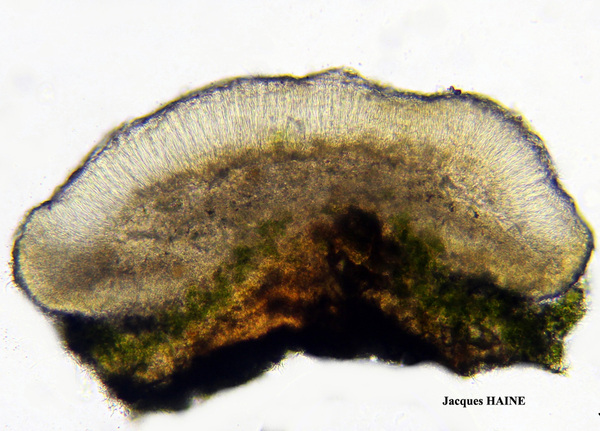
Jacques Haine - Source: http://www.lichensmaritimes.org/index.php?task=fiche&lichen=1208&lang=en
Belgium, Hermeton
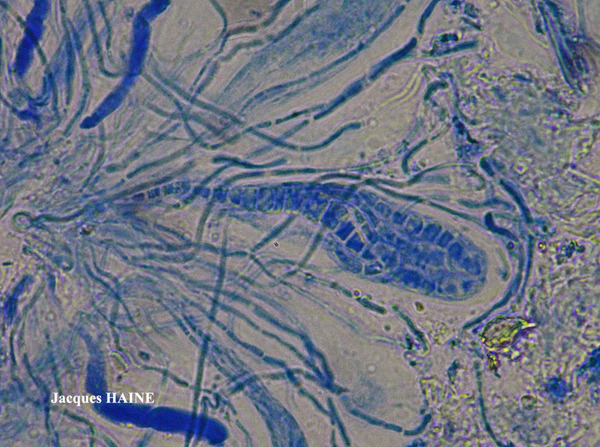
Jacques Haine - Source: http://www.lichensmaritimes.org/index.php?task=fiche&lichen=1208&lang=en
Belgium, Hermeton
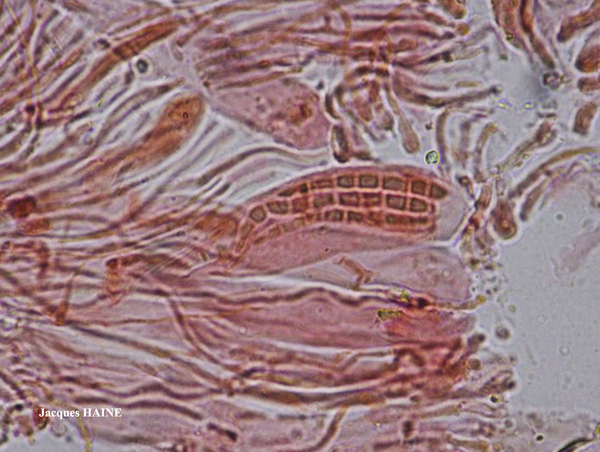
Jacques Haine - Source: http://www.lichensmaritimes.org/index.php?task=fiche&lichen=1208&lang=en
Belgium, Hermeton
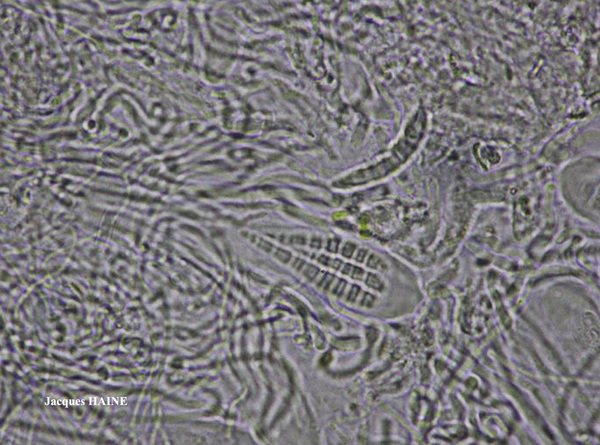
Jacques Haine - Source: http://www.lichensmaritimes.org/index.php?task=fiche&lichen=1208&lang=en
Belgium, Hermeton
Growth form: Crustose
Substrata: rocks
Photobiont: green algae other than Trentepohlia
Reproductive strategy: mainly sexual, or asexual by conidia and thalloconidia
Most common in areas with a humid-warm climate (e.g. most of Tyrrenian Italy)
In underhangs rarely wetted by rain

Predictive model

Bernard Bouffinier - Source: http://www.lichensmaritimes.org/index.php?task=fiche&lichen=1208&lang=en
France, Loqueffret

Bernard Bouffinier - Source: http://www.lichensmaritimes.org/index.php?task=fiche&lichen=1208&lang=en
France, Loqueffret

Bernard Bouffinier - Source: http://www.lichensmaritimes.org/index.php?task=fiche&lichen=1208&lang=en
France, Loqueffret

Bernard Bouffinier - Source: http://www.lichensmaritimes.org/index.php?task=fiche&lichen=1208&lang=en
France, Loqueffret

Jacques Haine - Source: http://www.lichensmaritimes.org/index.php?task=fiche&lichen=1208&lang=en
Belgium, Hermeton

Jacques Haine - Source: http://www.lichensmaritimes.org/index.php?task=fiche&lichen=1208&lang=en
Belgium, Hermeton

Jacques Haine - Source: http://www.lichensmaritimes.org/index.php?task=fiche&lichen=1208&lang=en
Belgium, Hermeton

Jacques Haine - Source: http://www.lichensmaritimes.org/index.php?task=fiche&lichen=1208&lang=en
Belgium, Hermeton

Jacques Haine - Source: http://www.lichensmaritimes.org/index.php?task=fiche&lichen=1208&lang=en
Belgium, Hermeton

Jacques Haine - Source: http://www.lichensmaritimes.org/index.php?task=fiche&lichen=1208&lang=en
Belgium, Hermeton

